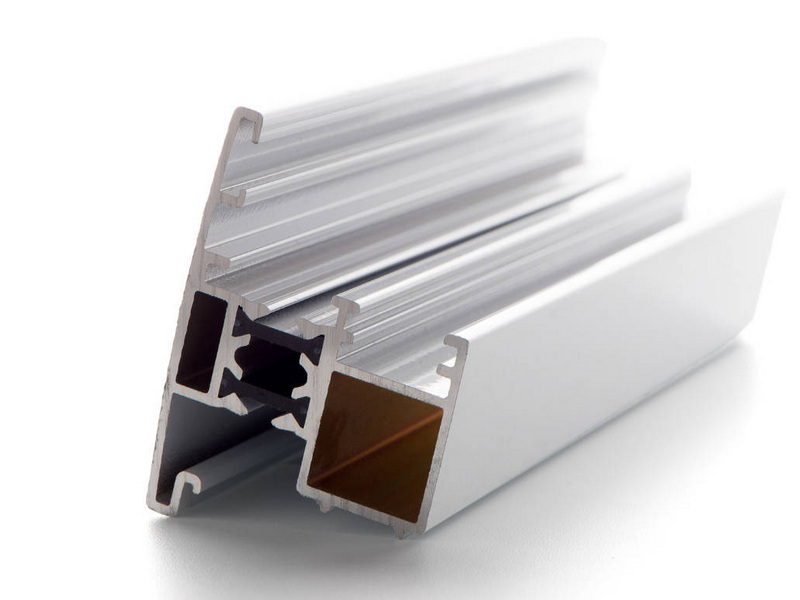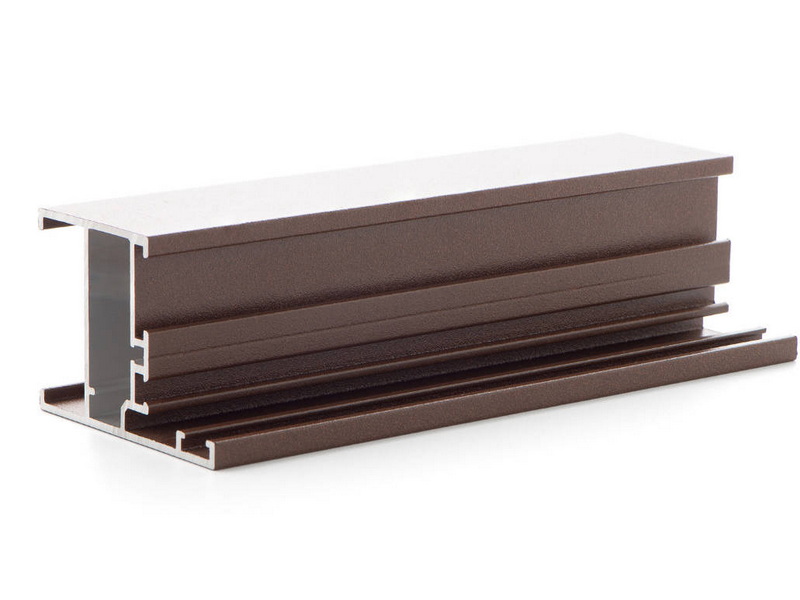English 




Views: 222 Author: Astin Publish Time: 2025-03-20 Origin: Site



Content Menu
● Introduction to T-Slot Aluminum Profiles
>> Benefits of T-Slot Aluminum Profiles
● Methods of Connecting T-Slot Aluminum Profiles
>> 1. Standard Fastening with Bolts and Nuts
>> 6. Three-Dimensional Corner Connectors
>> 8. Combination Connection Method
● Assembling T-Slot Aluminum Profiles
● Applications of T-Slot Aluminum Profiles
>> 1. What are the primary benefits of using t-slot aluminum profiles?
>> 2. How do I choose the right connection method for my t-slot aluminum project?
>> 3. What tools are required for assembling t-slot aluminum profiles?
>> 4. What are some common mistakes to avoid when assembling t-slot aluminum structures?
>> 5. Can t-slot aluminum profiles be used in dynamic or heavy-duty applications?
T-slot aluminum profiles have become a staple in modern construction and manufacturing due to their versatility, strength, and ease of assembly. These profiles are widely used in creating custom structures, machinery, and automation systems because they offer a modular design that allows for easy modification and reconfiguration. In this article, we will explore the various methods of connecting and assembling t-slot aluminum profiles, highlighting their benefits and applications.

T-slot aluminum profiles are extruded aluminum components featuring T-shaped slots along their sides. These slots enable the easy attachment of various components without the need for drilling or welding, making them ideal for applications requiring frequent reconfigurations. The profiles are typically made from the 6105-T5 aluminum alloy, known for its high strength-to-weight ratio, corrosion resistance, and excellent conductivity properties.
1. Modular Design: T-slot aluminum profiles allow for easy customization and modification of structures, reducing downtime during changes or upgrades.
2. Cost-Effectiveness: The modular nature and ease of assembly minimize labor costs and shorten project timelines, making it a cost-effective option for various applications.
3. Durability and Strength: Despite being lightweight, t-slot aluminum framing offers excellent durability and strength, suitable for demanding environments.
4. Corrosion Resistance: Aluminum's natural resistance to corrosion ensures that t-slot framing can be used in environments where moisture and chemicals are present without the risk of degradation over time.
5. Aesthetic Appeal: The sleek and professional appearance of t-slot aluminum framing makes it suitable for a wide range of environments, from industrial settings to retail spaces and laboratories.
There are several methods to connect t-slot aluminum profiles, each with its own advantages and applications.
This is the most straightforward and widely used method. T-slot aluminum profiles come with T-shaped slots that allow for the insertion of bolts. Nuts are then tightened onto the bolts, creating a secure connection. This method is simple, reliable, and easy to disassemble if needed.
Many t-slot aluminum profiles are designed to accommodate T-nuts, which can slide along the T-shaped slots. The nuts have tabs that fit into the slots, allowing for easy positioning. After placing the T-nuts in the desired locations, bolts are inserted and tightened to secure the connection. This method is particularly efficient as it eliminates the need for precise nut placement.
Corner brackets are a common type of aluminum profile connector, allowing two aluminum profiles to be connected at 90 degrees, 45 degrees, or 135 degrees angles with good load-bearing capacity. There are two types of corner brackets: embedded and external. Embedded corner brackets offer a more aesthetically pleasing appearance, while external ones are more convenient to install.
Embedded connectors provide a concealed way of connecting aluminum profiles, where two profiles are securely fixed using embedded connectors. This connection method is both aesthetically pleasing and strong, making it suitable for applications where surface smoothness and aesthetics need to be maintained.
T-groove connectors are a common assembly-type connection method for aluminum profiles, where multiple profiles are combined through a central node. This connection method offers flexibility and good disassembly characteristics, making it widely used in mechanical manufacturing and other fields.
Three-dimensional corner connectors are an emerging type of aluminum profile connection method, allowing three or four profiles to be combined through a central node with good load-bearing capacity. This type of connection is suitable for creating complex spatial structures or supporting large-area objects.
Active hinges are a special type of connectors widely used in applications such as cabinet doors and windows. They enable connected objects to open and close freely, providing excellent stability and load-bearing capacity.
The combination connection method involves combining multiple different or similar but differently sized connectors to achieve the required connectivity for complex engineering projects. This method is extensively applied in practical engineering and often leads to innovative and efficient problem-solving approaches.

Assembling t-slot aluminum profiles is a relatively straightforward process that can be completed with basic hand tools. Here's a step-by-step guide:
1. Cut the Profiles: Cut the t-slot aluminum profiles to the desired lengths using a saw or other cutting tool. Ensure accurate cuts to maintain the quality of the finished structure.
2. Attach the Connectors: Insert the connectors into the ends of the profiles, aligning the slots on the connector with the T-slot on the profile. Secure the connectors in place with screws or other fasteners.
3. Assemble the Structure: Connect the profiles and connectors together to create the desired structure. Use screws or other fasteners to secure the joints and ensure that the structure is stable and secure.
4. Add Accessories: Once the assembly is complete, add any necessary accessories such as panels, casters, or wire mesh fillers.
5. Test the Structure: Ensure that the structure is stable and secure. Make any necessary adjustments or modifications before using the structure for its intended purpose.
- Using Harsh Chemicals: Avoid using harsh chemicals when cleaning t-slot aluminum structures, as they can damage the anodized finish.
- Misalignment: Ensure proper alignment of profiles during assembly to prevent structural weaknesses.
- Looseness: Regularly check and tighten all connections to prevent loosening over time, especially in dynamic environments.
T-slot aluminum framing is widely used in various industries due to its versatility and adaptability. Some common applications include:
- Industrial Settings: Safety guarding, machine bases, and robot enclosures.
- Commercial and Residential Spaces: Custom furniture, workstations, and automation systems.
- Clean Environments: Materials handling systems and enclosures where corrosion resistance is crucial.
T-slot aluminum profiles offer a versatile and cost-effective solution for creating custom structures and machinery. Their modular design allows for easy assembly and reconfiguration, making them ideal for applications requiring frequent modifications. By understanding the various connection methods and assembly processes, users can maximize the potential of t-slot aluminum profiles to meet specific project needs.

- The primary benefits include a modular design for easy customization, cost-effectiveness due to reduced labor and material costs, high strength-to-weight ratio, corrosion resistance, and excellent conductivity properties.
- The choice of connection method depends on the specific requirements of your project, such as load-bearing capacity, aesthetic considerations, and the need for flexibility or disassembly. Common methods include standard fastening, slide-in T-nuts, corner brackets, and embedded connectors.
- Basic hand tools such as saws for cutting, drills for tapping holes, and wrenches or hex keys for tightening screws are typically needed. Specialized tools like drill presses can enhance precision and efficiency.
- Common mistakes include using harsh chemicals for cleaning, misaligning profiles during assembly, and failing to regularly tighten connections to prevent loosening over time.
- While t-slot aluminum profiles are versatile and strong, they may not be suitable for heavy-duty or highly dynamic applications due to potential issues with structural integrity and loosening of connections over time. In such cases, alternative materials like steel might be more appropriate.
[1] https://www.gapengineering.com.au/blog/how-to-connect-t-slot-aluminium-extrusions-2/
[2] https://www.chalcoaluminum.com/blog/6-tslot-connection/
[3] https://www.chaluminium.com/3-things-to-know-assembling-t-slot-aluminum-structures
[4] https://shop.machinemfg.com/understanding-t-slot-aluminum-framing-applications-and-benefits/
[5] https://anglelock.com/blog/t-slot-assembly-how-to
[6] https://www.chaluminium.com/the-versatility-of-t-slot-aluminum-connection-advantages-methods-and-usage
[7] https://www.gapengineering.com.au/blog/which-size-profile-is-the-right-one-for-my-project/
[8] https://www.gapengineering.com.au/blog/how-to-select-the-correct-connecting-method-for-t-slot-aluminium-extrusions-copy/
[9] https://www.mastar-metal.com/blog/join-profile
[10] https://www.industrialprofile.com/t-slot-aluminum-essential-tips-to-keep-in-mind-when-purchasing/
[11] https://anglelock.com/blog/t-slot-hardware-aluminum-extrusion
[12] https://www.youtube.com/watch?v=zQklX7zGPCw
Top Aluminum Furnitures Manufacturers and Suppliers in Czech Republic
Top Aluminum Furnitures Manufacturers and Suppliers in Poland
Top Aluminum Furnitures Manufacturers and Suppliers in Belgium
Top Aluminum Furnitures Manufacturers and Suppliers in Finland
Top Aluminum Furnitures Manufacturers and Suppliers in Denmark
Top Aluminum Furnitures Manufacturers and Suppliers in Greece
Top Aluminum Furnitures Manufacturers and Suppliers in Portugal
Top Aluminum Furnitures Manufacturers and Suppliers in Austria
Top Aluminum Furnitures Manufacturers and Suppliers in Norway
Top Aluminum Furnitures Manufacturers and Suppliers in Sweden
